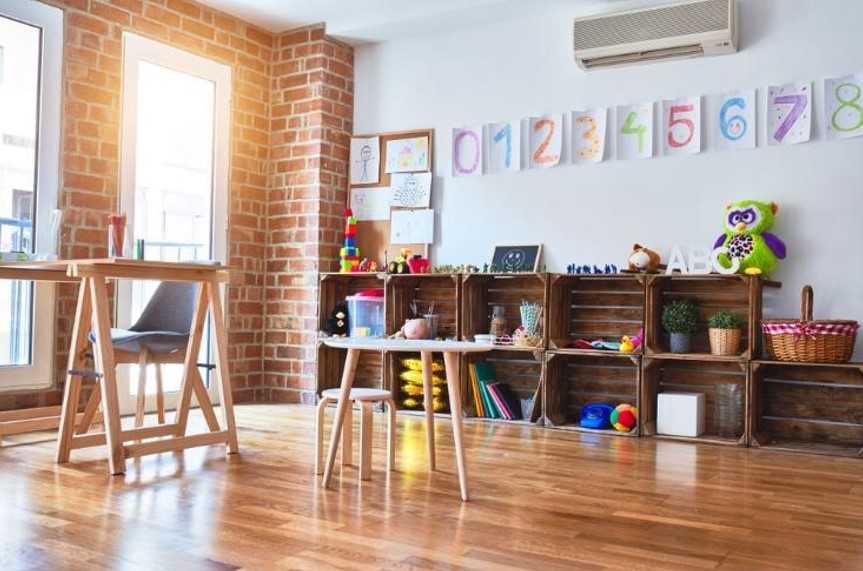Creating spaces for anxious and overly energetic students to calm down is more important than ever in the post-pandemic teaching world. Giving students a sense of normalcy in the classroom has been a huge undertaking for teachers after a period where students’ lives were disrupted, schedules were up-ended, and consistent routines were broken.
Some schools have special school-wide calming spaces, also referred to as calming rooms. However, if your school doesn’t provide this, then implementing some of the ideas below, such as a “calm down corner” can be equally as effective.
A “calm down corner” or calming corner in the classroom is an incredibly valuable tool for any teacher (and truth be told: we could probably use them in most adult spaces, too!) Read on to learn more about creating a calm down corner in your classroom and making it work effectively for all kinds of students.
1. Cozy Equals Calm
When you think about an environment that soothes you, you probably imagine a warm, cozy, and inviting space. For a teacher, it may be a reading nook in your living room, the hammock in your backyard, or the rocking chairs on your front porch. These are spaces where time slows down and where you can take a moment to decompress.
Students need those types of spaces, too, even if they cannot yet articulate it—or understand what it means to decompress! A cozy corner in your classroom might be created by partitioning two bookcases to block off a quiet spot, and perhaps you can add a bean bag chair or a comfortable floor pillow and a small rug.
By setting the tone that this area is warm, cozy, safe and inviting, you have already moved students toward feeling calm.
2. Offer Visual Cues to Calm Down
In your calm down corner, provide students with visual cues that will keep them mindful of the purpose of that space. These might include wall hangings—perhaps a poster of the sun setting over the ocean and a sign illustrating some simple breathing exercises. Avoid the urge to “overdo” the space, though. Keep it simple and minimize clutter to help students relax.
Your posters and wall decorations should help students relax, so use cheerful and soothing color palettes and images of things that make them feel safe and happy. You could also invite students to create some artwork specifically for the calm down corner, getting them invested in the idea of a special space they can all use as a resource.
3. Choose Reading Materials Carefully

The calm down corner may not be the right space for an action-packed graphic novel, a mystery, or a wildly funny book; instead, opt for age-appropriate reading material geared toward mindfulness and social and emotional learning.
Your school’s librarian or guidance counselor would be a good resource for recommendations and can point you toward some trusted books that educators use to promote mindfulness in students.
The calm down corner should offer a small selection of carefully chosen books, rather than the vast selection you might offer in a class library intended to have something for everyone or geared toward getting kids interested in reading in general.
Check the inventory of the calm down corner books weekly to be sure other less appropriate books have not been inadvertently mixed into this area. A student reading a suspenseful or even just wacky book in this area will not have the desired effect: think of it like letting your child watch a scary movie just before bedtime! The reading materials in this area should calm rather than excite your students.
4. Don’t Be Afraid to Add Some Noise
Noise in a calm down corner may seem counterintuitive at first glance, but adding the right kind of noise can be incredibly effective. Classical music played at a low volume or a sound machine set to something soothing, such as ocean waves or gentle rain, could make this space even more calming for an anxious or rambunctious student.
You will want to position any such devices carefully so that the students cannot adjust them, and only you can control the volume and settings. With some clever arrangements around bookcases or other class furniture, you may be able to keep the device hidden altogether but still have the gentle humming in the background when the calm down corner is in use.
5. Technology Is Not the Enemy of Calm
While screen time is often associated with many of the challenges teachers face in the classroom with distracted or anxious students, it can also be harnessed for good in the case of a calm down corner.
There are some fantastic educational tools and apps like DreamyKid available to help teachers introduce meditation or other calming techniques to young students.
If you can provide a tablet for use in the calm down corner with a few carefully chosen electronic resources, you may be able to capture the attention of some of your screen-addicted kids and persuade them into taking part in a mindfulness exercise that helps them calm down, refocus, and return to the class refreshed and ready to learn.
Benefits of a Calm Down Corner

A calm down corner or cozy corner is the perfect training ground for children to become more aware of their big emotions and how they manage them. These environments offer a much more constructive way for students to self-regulate than the old-fashioned time-out styles, where students feel isolated and punished.
Instead, you can use your classroom’s calm down corner kit and safe space as an area where the student can take a deep breath, learn how to deal with big feelings, and find the best coping strategy for them.
Introducing mindfulness techniques in a calm down area and calm down tools like a stress ball or fidget toy can benefit students (and teachers!) for years to come, and they can help minimize behavioral issues in the classroom as well, leading to happy kids.
Calm down corners teach students valuable lessons in self-awareness, which will strengthen their social relationships and ability to empathize with peers.
A calm down space is a safe place that is becoming more commonplace in many schools as we see the benefits of using them to steer students toward more appropriate behavior and better emotional regulation. With creative planning and arrangement, a calm down area can be worked into almost any classroom setting.




